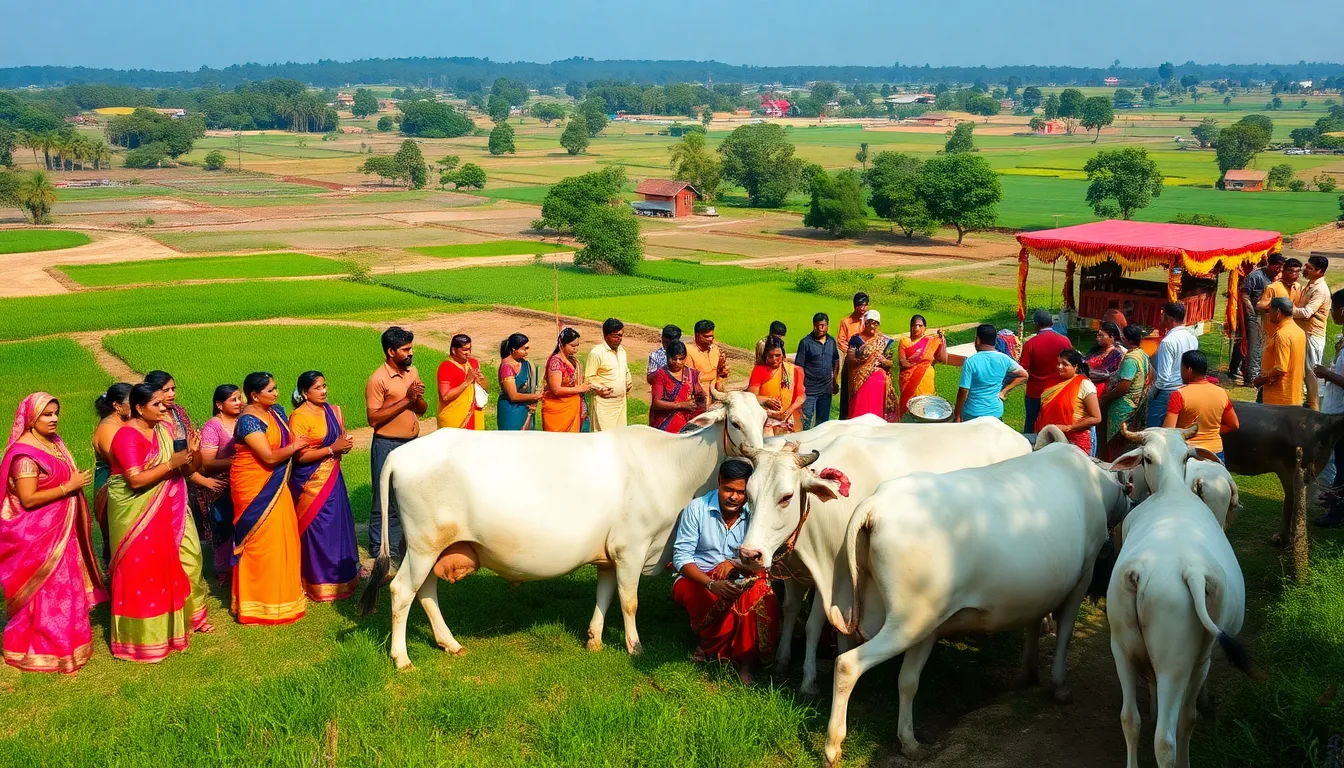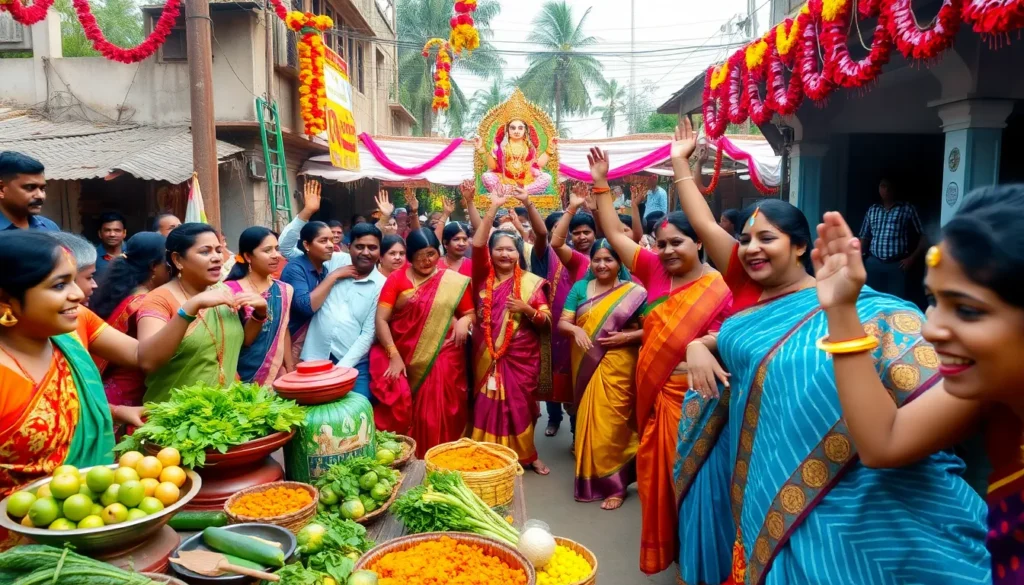In the vibrant tapestry of Indian folklore, Gowthalamma stands out as a beloved figure, often celebrated for her nurturing spirit and divine qualities. Picture a goddess who doubles as a guardian and a friend, guiding her devotees with a wink and a smile. Her stories blend traditional wisdom with a dash of humor, making her a relatable icon for many.
Table of Contents
ToggleOverview of Gowthalamma
Gowthalamma represents a beloved deity within Indian folklore, embodying nurturing qualities and divine attributes. Devotees often view her as a protector, offering wisdom and companionship. Symbolism plays a significant role in her portrayal, often associated with agriculture, fertility, and livestock.
Traditionally, she appears in stories that highlight her connection to nature and the well-being of rural communities. Herdsmen and farmers particularly respect her, recognizing her influence over livestock health and crop prosperity. Rituals honoring Gowthalamma frequently take place during farming seasons, where her blessings are sought for abundant harvests.
Gowthalamma’s tales blend elements of humor with sage advice. This duality makes her relatable, as she interacts with her devotees in lighthearted yet meaningful ways. Festivals held in her honor often feature songs, dance, and community gatherings, reinforcing bonds between people and their land.
Cultural practices surrounding Gowthalamma demonstrate her importance in daily life. Offerings usually include milk, sweets, and fresh produce, emphasizing gratitude and respect. Devotees believe that her presence fosters harmony and prosperity within their families and communities.
Her influence extends across various regions, with local variations in worship and stories shared from generation to generation. In this way, Gowthalamma remains an enduring figure, reflecting the agricultural roots of the society and the enduring connection between humans and nature.
Historical Significance

Gowthalamma’s historical significance lies in her deep roots within Indian culture and the agricultural landscape. Her origins intertwine with ancient traditions, where her nurturing qualities were celebrated in multiple communities.
Origins and Cultural Background
Gowthalamma’s origins trace back to local agricultural practices. She emerges as a vital deity for farmers and herdsmen, embodying aspects of fertility, growth, and prosperity. Folklore positions her as a protector of livestock health and crop yields, reflecting her importance in rural life. Cultural narratives often highlight her connection to the earth, emphasizing her role in sustaining human life through agriculture and livestock. Many regional variations exist, showcasing diverse worship practices and local legends enveloping her figure.
Evolution of Practices
Devotional practices surrounding Gowthalamma have evolved over time. Early rituals may have focused solely on agricultural rites, but modern celebrations now incorporate community gatherings and festive events. Local festivals highlight her influence, featuring songs, dances, and collective offerings, strengthening community ties. Seasonal rituals continue to thrive amidst changing agricultural practices, showcasing her adaptability. Contemporary worship includes offerings of milk, sweets, and local produce, symbolizing gratitude while reflecting her enduring relevance to both spiritual and agricultural life.
Rituals and Celebrations
Rituals and celebrations dedicated to Gowthalamma reflect her deep-rooted significance in agriculture and community life. These events showcase devotion and gratitude towards this nurturing deity.
Key Festivals and Events
Annual festivals honoring Gowthalamma draw large crowds from surrounding villages. Celebrations often coincide with the harvest season, reinforcing her role in agriculture. Devotees engage in vibrant activities such as traditional dances, singing folk songs, and participating in processions. Local fairs and markets surface during these festivities, providing opportunities for communal bonding. Special prayers and offerings, including milk and sweets, symbolize thanks for blessings related to fertility and prosperity.
Traditional Customs
Traditional customs surrounding Gowthalamma highlight her integral role in rural life. People commonly set up altars adorned with fresh produce and flowers to honor her spirit. Rituals usually involve gathering in community spaces for pujas and collective worship. Each community adds its own unique flavor to the celebrations, incorporating regional music and art forms. Devotees often recount folk tales that center around her wisdom and humor, reinforcing cultural heritage. These customs not only foster spiritual connection but also strengthen social ties among people.
Impact on Community and Society
Gowthalamma holds a significant role in both spiritual and cultural dimensions of her followers’ lives, reinforcing community ties and shared values.
Role in Spiritual Life
Devotees regard Gowthalamma as a vital source of guidance and protection. They approach her with prayers during critical farming moments, especially before sowing and harvesting seasons. With her connection to fertility and growth, she inspires confidence in agricultural practices. Rituals conducted in her honor stand as pillars of spiritual life. Participants engage in collective worship and receive blessings, fostering a sense of unity among community members. Traditional offerings, like milk and sweets, symbolize gratitude, directly enhancing the spiritual bond between the devotees and their beloved deity.
Influence on Local Culture
Gowthalamma’s presence permeates local culture, reflecting in various art forms, festivals, and community practices. Festivals dedicated to her serve as cultural showcases, featuring folk songs and traditional dances that celebrate her nurturing qualities. Villagers participate enthusiastically, enhancing social cohesion and collective identity. Unique regional customs emerge around these celebrations, adding local flair to the practices. Stories about her wisdom circulate within communities, reinforcing ethical values and cultural heritage. Additionally, local markets thrive during these events, fostering economic interactions and encouraging artisans to share their crafts, thus enriching the community’s cultural fabric.
Gowthalamma embodies the spirit of nurturing and community, playing a vital role in the lives of her devotees. Her stories and rituals not only celebrate agricultural prosperity but also strengthen social bonds among individuals. Through vibrant festivals and collective worship, she remains a symbol of hope and guidance, inspiring confidence in the agricultural practices of her followers.
As communities continue to honor her with love and devotion, Gowthalamma’s influence endures, adapting to modern times while preserving rich cultural traditions. Her legacy reflects the harmonious relationship between spirituality and daily life, reminding everyone of the importance of gratitude and connection to nature.




